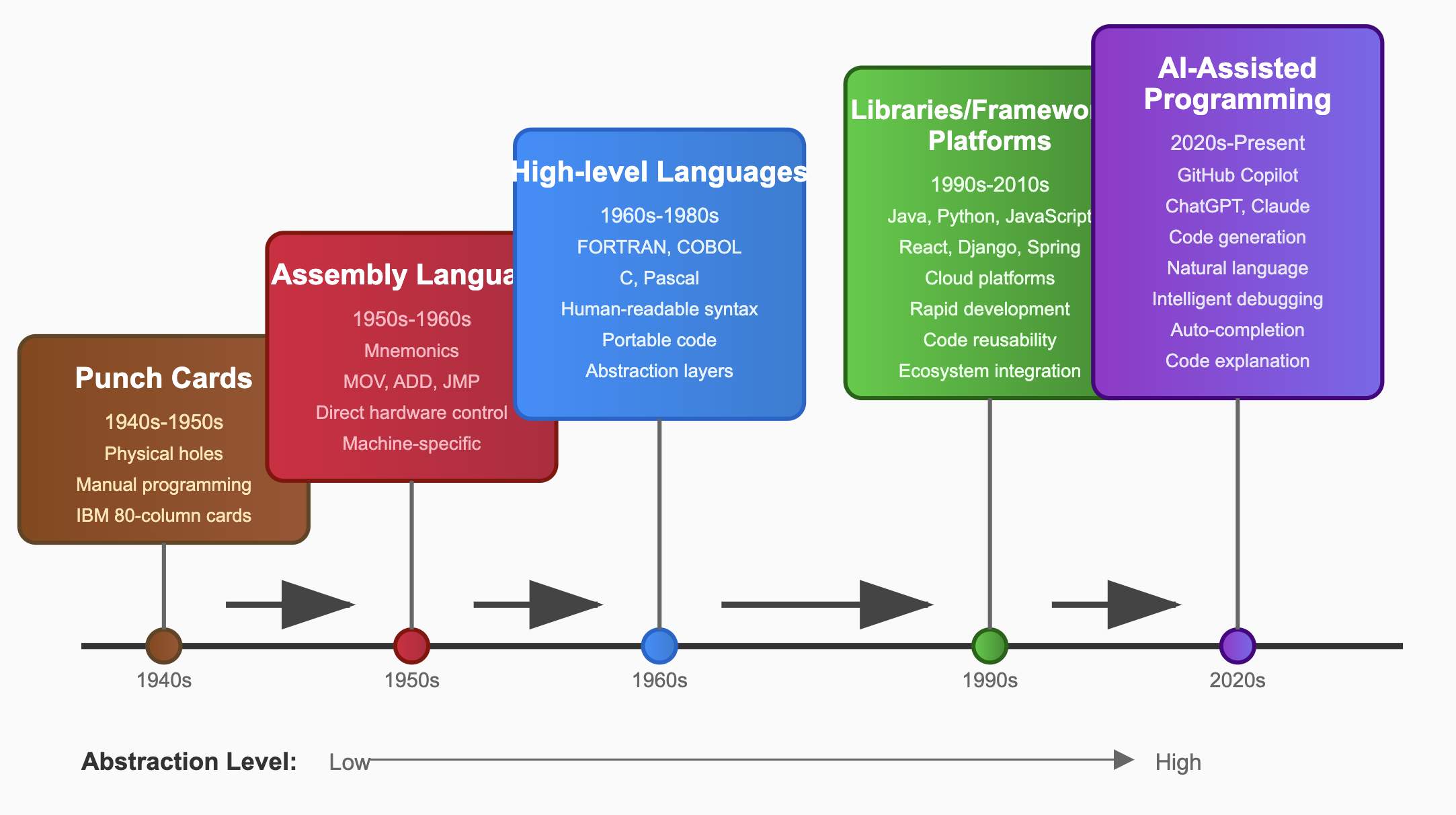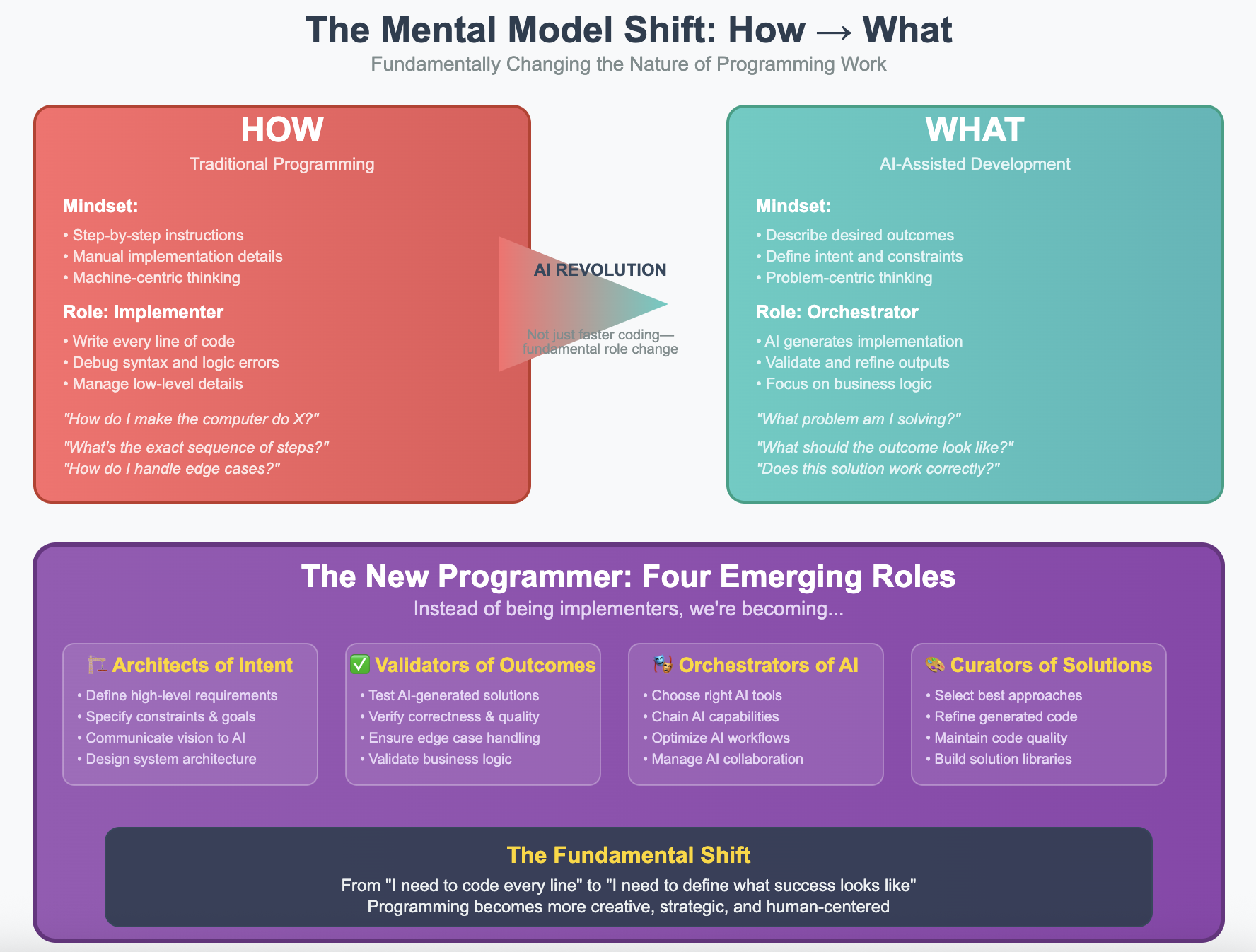Software engineering has always been a story of abstraction. Each layer we’ve built has hidden complexity while enabling new possibilities. From punch cards to AI agents, we’ve continuously moved away from the machine’s perspective toward human intent. Today, we’re witnessing the emergence of yet another abstraction layer—one that might fundamentally change not just how we code, but how we think about building software.
As part of industry I fell confuse myself where Jargon from marketing, industry hype, thought from legendary and thought leader but Definitely we living in interesting era where we have option to choose to leverage new power or it just another dust in the wind, I don’t know but let try to see how it going

Isolation and Intent
The evolution of software engineering can be viewed through two parallel tracks: isolation and intent. The isolation track has given us layers that separate us from hardware complexity, while the intent track has moved us from describing “how” to expressing “what” we want to achieve.
The Isolation Evolution: From Metal to Mind
The hardware stack tells a story of progressive isolation:

Each layer created boundaries that allowed developers to work without worrying about the complexities below. Operating systems abstracted hardware details. Containers isolated applications from each other and the host environment. Runtime environments like the JVM created platform-independent execution contexts.
This progression has been about reducing cognitive load—letting developers focus on business logic rather than memory management, process scheduling, or hardware quirks.
The Programming Evolution: From Instructions to Intentions
Parallel to isolation, we’ve seen an evolution in how we express our intentions:

Each step moved us further from machine instructions toward human-readable expressions of intent. Assembly gave us mnemonics instead of binary. High-level languages gave us variables and control structures. Libraries and frameworks gave us pre-built solutions for common patterns.
Now, AI represents the next step: moving from procedural instructions to declarative intent.
The Mental Model Shift: How → What
Perhaps the most significant change happening today is the shift in our mental model. Traditional programming has been about the “how”—step-by-step instructions telling the computer exactly what to do. AI-assisted development moves us toward the “what”—describing desired outcomes and letting AI figure out implementation details.

This isn’t just about coding faster. It’s about fundamentally changing the nature of our work. Instead of being implementers, we’re becoming:
- Architects of intent
- Validators of outcomes
- Orchestrators of AI capabilities
- Curators of generated solutions
Conclusion: Choosing Your Abstraction Level
The emergence of AI as an abstraction layer doesn’t make previous layers obsolete—it gives us choices about where to operate. Just as we can still write assembly when needed, we can choose our level of abstraction based on the problem at hand:
Low-level optimization might still require traditional programming Rapid prototyping might benefit heavily from AI assistance Critical systems might need human oversight at every layer Experimental features might be perfect AI collaboration candidates